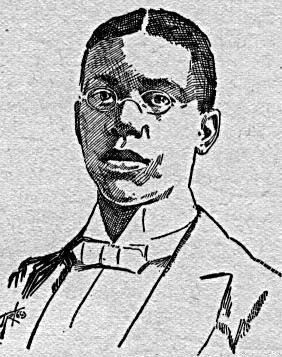Dunbar and the Black Midwest Article in ALH
I am pleased to share, somewhat belatedly, that my article “Race, Region, and the Black Midwest in the Dunbar Decades” was published in this May’s American Literary History. If you click over to the Writing tab you’ll find a link to read the article. I hope you enjoy! On this page I’ll share a few brief thoughts on the process.
As with any publication, this one has a long history: it dates back to my third semester of graduate coursework, almost seven years ago. In a classroom led by Brad Evans and surrounded by brilliant friends like Dan Malinowski, Ariel Martino, Tim Morris, and Amadi Ozier, I remember being amazed at how kaleidoscopic Dunbar’s poetry collections are when read as a whole. I spent a month looking at microfilm and other materials at the Dayton Public Library. A workshop with Gene Jarrett, an exceptional scholar of the Dunbar decades, helped hone its arguments. The discerning feedback of the readers and editorial staff of ALH truly helped me take the article’s organization and scope to the next level. Meredith McGill liked to tell me that a good article should teach smart readers something, not just give them a compelling claim; I’d like to believe mine does.

My initial aim in this research was to correct two mistakes made by nearly everyone who has written on Dunbar: first, that he did in fact spill a lot of ink writing about or in styles associated with the Midwest, and second, that this writing was indeed popular, in the Midwest and elsewhere. The more I thought about this the more I wanted to know how it worked: what combination of the affordances of style, authorial savvy, circulation systems, and cultural conditions made it possible for a Black man at the height of Jim Crow to become famous as Midwestern.
Methodologically, I wanted to write an article that showed how Dunbar’s writing was able to move the way it did: how Dunbar’s specific stylistic and career choices resonated with emergent cultural associations and literary demographics. The article has four sections. The first outlines the rising popularity of Midwestern style and how Dunbar used it as an alternative thematic space independent of race. The second section tracks Dunbar’s publication strategies for getting his Midwestern work off the ground (even as he also became famous for highly racialized plantation poetry) and how this reputation got legs of its own in newspapers. The third section looks at a few remarkable poems in which Dunbar actually intermixes contemporaneous regional and racial conventions, leveraging stylistic commonalities to suggest cultural affinities. The final section shifts more to reception, showing how Dunbar’s writing encouraged white Midwesterners, Black Midwestern writers, and Black Midwestern reading clubs to consider the possibility of multiracial regional belonging.
The primary source for much of this article was newspapers – poem reprintings, critical reviews, community notices, and more – though magazines were important as well for some of the more sweeping pronouncements on style and for original publication context. I’m always promoting the use of newspapers in literary research, but it’s long and difficult work to scour tiny print on backlit screens. Getting an eye for fin de siècle Midwestern style – to such a degree as to recognize Dunbar’s subtle experiments with it – required reading tons of forgotten poetry volumes. Bibliographies of Black writing were invaluable for locating Dunbar’s Black Midwestern follower-peers.
As with any article, things got left on the cutting room floor. There are scores of fascinating instances of Midwestern publication and recirculation that corroborate the points made in the article: ads for farm acreage that use Dunbar poems, etc., etc. In the chapter version of the article, there’s an additional section that reads a number of Dunbar’s more famous (today, that is) poems about the antebellum South as figuratively estranging that cultural memory, emphasizing its disconnect from modern Black life and thereby preparing the ground for another region. I think it’s a fine section, but it’s not where the real thrust of the argument is.
The project posed two big challenges. One was to write an article that was at once about Dunbar and about the cultural conditions that enabled him. This was a careful balancing act; it required the thread of the argument to shuttle continually into and out of Dunbar’s own work. The first section moves from literary context to a Dunbar story, the second from Dunbar’s agency to diffuse circulation, the third is locked on two Dunbar poems though with many references, and the fourth moves from Dunbar reviews to authorial and readerly reception. None of the readings are of canonical pieces, which raised some eyebrows and meant that the reading-focused third section really had to deliver. Ending with the section with the least Dunbar required some convincing, but I felt that this outward look was where the article needed to culminate. If Dunbar was the beneficiary of a unique cultural moment, he understood it exceptionally well and did a lot to shape it; I don’t think the “Dunbar Decades” is an overstatement.
The second challenge was to avoid overstating the case while still insisting on the Dunbar’s innovation, agency, and impact. I’m not naively optimistic about this: I doubt that the majority of people who read Dunbar’s Midwestern writing suddenly stopped being racist. But I do believe in the power of literature to do things in the world, and the historical record simply has too many examples of people thinking twice about the intersection of race and region after an encounter with Dunbar to simply ignore them. Dunbar saw real artistic and social opportunity for the Black Midwest, and the contours of that opportunity are worth exploring.